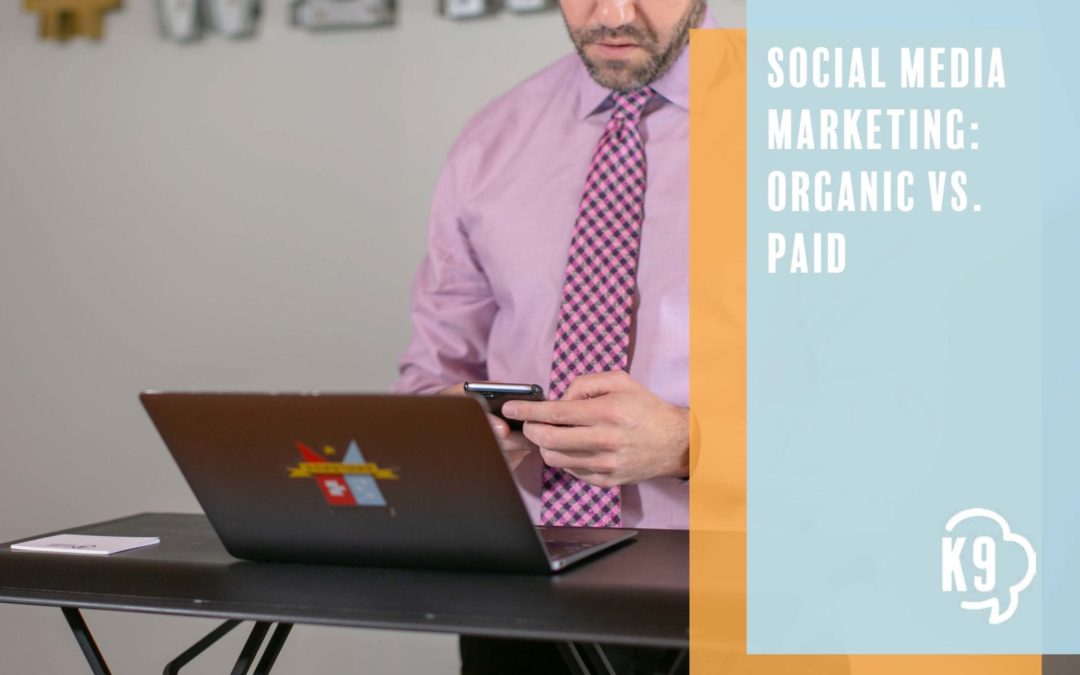Navigating the realm of social media marketing can be easy for some and a whole different ballgame for others. Terms such as outbound marketing, impressions, and retargeting may be difficult to understand for someone that is just starting out. Users of social media have it simple; simply post your thoughts as a status, share a photo, tweet about how you’re feeling, or upload a video. But when it comes to utilizing social media to its greatest advantage, not only as a marketer, but as a business owner, the need to understand all of the ins and outs, features, and the general name of the game is advantageous. You can always outsource your marketing to a digital marketing agency, hire an internal marketing manager, or learn the ropes on your own. Regardless of your decision, in order to shine on social media, the team in charge of your marketing will have to dedicate substantial time, budget, and the necessary resources to both your organic and paid social media content.
Organic Posts vs. Paid Posts
The difference between organic content and paid content is merely the cost. As the name suggests, paid content requires money whereas organic content does not. Organic posts serve as a great way to build your online presence and to keep your followers engaged. A social media account with a feed that hasn’t been updated in months can signal consumer confusion. An inactive feed may cause the potential customer to abruptly end their search for information upon seeing no recent or relevant activity. Although organic posts may not appear in a user’s newsfeed each and every time, it still serves as a means to maintain brand awareness.
It’s no secret that social media platforms want your money. Because social media platforms are optimized to make a profit, paid media can come in handy. Paid media is a fantastic method to combat social media algorithms, or at least an attempt to get your posts seen. Although the algorithm can still hold a grip over which content is seen by certain audiences, paying for eyes on your content is your best chance to target certain demographics, including location, age, and gender. The largest social media platform, Facebook gives your business the ability to be seen through paid media in two different ways: boosting your post or creating a Facebook Ad.
Boosts vs. Facebook Ads
A boost is primarily more important for local businesses; well-established brands have little to no need for a boost as their page most likely has thousands of supporters already. Many people will argue that a boosted post is a waste of money, while others disagree. For starters, a boost is a fast and easy way to set up an ad. Boosts give you control over your audience (as long as it is created in advance) and budget, but placements will not be as controllable.
Facebook Ads, on the other hand, allow you to choose from a variety of objectives including brand awareness, website traffic, and conversions. You’ll be prompted through three levels (campaign, ad set, and ad) which each have different specifications. For example, you’ll be prompted to select your audience at the ad set level and your creative medium at the ad level. Facebook Ads work wonders for local businesses and the bigger brands as well, as long as the targeting and budget are on par with each other. If your budget or audience are not large enough depending on the schedule you’ve allotted for, then Facebook may “limit your ad’s learning” until you bump up the budget or increase the audience size.
Combining Organic and Paid Media
Whether you own a B2B or B2C operation, it is highly likely that you will need to invest your time and money into both organic and paid media. These can be forms of both inbound marketing and outbound marketing and both will contribute their fair share to your marketing strategy. At the very least, ensure that your social media pages are consistently updated weekly with a minimum of 1 post per week. If your budget does not allow for a generous paid media budget, then at least you’ll have some activity on social media which your customers will appreciate. Many marketers will also suggest retargeting or remarking to potential customers that have engaged with your content. Social media platforms allow for an easy way to do this, but keep in mind that you’ll need a generous amount of engagement or traffic to your website. This can easily be accomplished with smart paid media strategies. Remember, people don’t come on social media to be sold an item or service. Basically, your advertisement is interrupting their experience, so make sure that if you do engage in paid media, make it worthwhile.
Unless you can rely 100% on word-of-mouth referrals, drastically cut your hours, or save money on labor, utilizing both an organic and paid media approach in your marketing strategy is a great way to boost your brand. As social media marketing continues to grow, having a team of creative professionals that can increase your page’s exposure both organically and with paid media will be beneficial, especially in these trying times. Contact us today for more information on how we can ensure that your social media is optimized for success.

